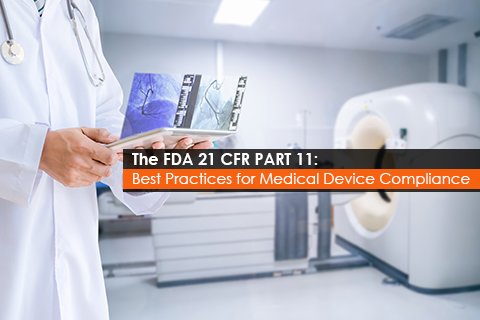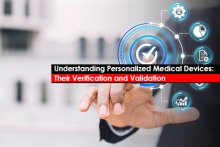With the advent of digitization, many global organizations, especially in life sciences and med-tech industries, have randomly shifted their data from paper to digital forms. Thanks to the stringent regulations, like US FDA’s 21 CFR Part 11 (21 CFR 11) regulation, the digitalized data forms are coming out to be accurate, efficient, productive, quality-oriented and reliable. The 21 CFR 11 regulation is a part of the Code of Federal Regulations, which establishes the US FDA regulations for electronic records and signatures. It specifically defines the requirements for submitting documentation in electronic form and the criteria for approved electronic signatures. With the extensive usage of electronic records in the medical device industries, it is a pre-requisite to understand and comply with the FDA 21 CFR Part 11 regulation. Here are a few best practices of the 21 CFR 11 regulation.
Best Practices for the FDA 21 CFR Part 11 Compliance
Security Access and Password Management: Data security comes first when following a compliant 21 CFR Part 11 regulation. While working with sensitive records, companies and organizations should have secured access and proper access controls that restrict reading or editing to only the authorized personnel. Additionally, good password management also adds up another layer of security to the records/documents. It is advisable to follow password best practices like, changing passwords regularly and creating strong passwords that include a mix of upper and lower letters, numbers and special characters.
Audit Trials and Traceability: Establishing clear audit trials is required to showcase the history of every document or record. Organizations must maintain the complete history of all the records with the exact username, date and time, to know when users are logging in and out. The FDA can view these records upon inspection.
Electronic Signatures: As per the 21 CFR Part 11, an electronic signature is based upon the cryptographic methods of originator authentication, computed by using a set of rules and parameters, where the identity of the person who signs and the integrity of the data can be verified. An electronic signature is a combination of username and password, which ensures to maintain the transparency as well as the integrity of the signature. Organizations must comply with these guidelines to review and approve the information present in biometric (fingerprint or retinal scan), digital signatures, scanning and handwriting capture in software. Also, the FDA should priorly be notified, if any organization is intending to use the electronic signatures.
Validation: Prior to using an electronic system for record-keeping, the system must be installed and validated properly. The system should be able to handle the minimum and maximum operational levels. The FDA 21 CFR Part 11 requires the validation of systems to demonstrate compliance and ensure accuracy, reliability and consistent intended performance. Therefore, Installation Qualification (IQ), Operational Qualification (OQ) and Process Qualification (PQ) stand as the critical elements of 21 CFR Part 11, which need to be validated.
On the final note, the FDA 21 CFR Part 11 regulation lowers the risk of human errors, cuts down the operational costs and reduces the turnaround time by using the electronic signature or records. Medical devices and life sciences industries must comply with this regulation to protect the integrity and confidentiality of their proprietary data. Failing to do so will land the organizations under serious Regulatory scrutiny. Are you still using a manual or paper-based approach to compile your data? Do you seek assistance to align with the FDA 21 CFR Part 11 regulation? Contact us! Stay informed. Stay compliant.





